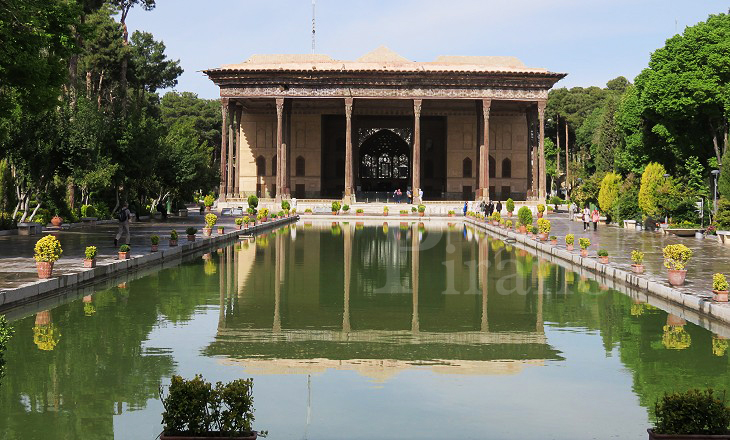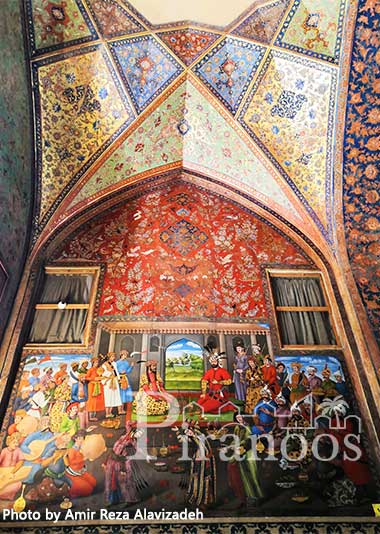Chehel Sotun Palace, depicted on the inscription of its date, called the most blessed building of the world, is one of the most beautiful memorials of Safavid era in today’s Isfahan. The stone sculptures around the pond and inside the gardens are the only works that have remained from the two other magnificent Safavid palaces. The four statues at the corners of the garden pool are symbols of Anahita, goddess of water.
The palace’s central hall, dedicated to foreign guests and personalities from other countries, contains paintings that present the historical events of different periods. This magnificent hall is characterized by colorful butterflies and golden and transparent designs of the masterpieces of that era.
The main porch is based on twenty pillars, which during Safavid era was covered with beautifully mirrored work. Chehel Sotun means 40 pillars and many scholars consider this to be the number of these twenty pillars and their reflection on the beautiful and large pool in front of the palace.
With the reign of King Abbas II, the seventh king of Safavid dynasty, the Chehel Sotun mansion has been enlarged and has added forums and porches. These include the Mirror Hall, the Eighteen Pillar Hall, the two large northern and southern chambers, the porches on the sides of the royal court, and the large pond in front of the Hall with all the decorations of painting, mirroring, tiling of the walls and ceilings. The palace opened in 1642 AD with the presence of Shah Abbas II and foreign ambassadors.
Nowadays Chehel Sotun mansion is viewed as a museum garden with its central hall showing some of the artworks of different periods of Iran. It is visited by foreign tourists and domestic guests.


The main porch is based on twenty pillars, which during Safavid era was covered with beautifully mirrored work. Chehel Sotun means 40 pillars and many scholars consider this to be the number of these twenty pillars and their reflection on the beautiful and large pool in front of the palace.
With the reign of King Abbas II, the seventh king of Safavid dynasty, the Chehel Sotun mansion has been enlarged and has added forums and porches. These include the Mirror Hall, the Eighteen Pillar Hall, the two large northern and southern chambers, the porches on the sides of the royal court, and the large pond in front of the Hall with all the decorations of painting, mirroring, tiling of the walls and ceilings. The palace opened in 1642 AD with the presence of Shah Abbas II and foreign ambassadors.
Nowadays Chehel Sotun mansion is viewed as a museum garden with its central hall showing some of the artworks of different periods of Iran. It is visited by foreign tourists and domestic guests.